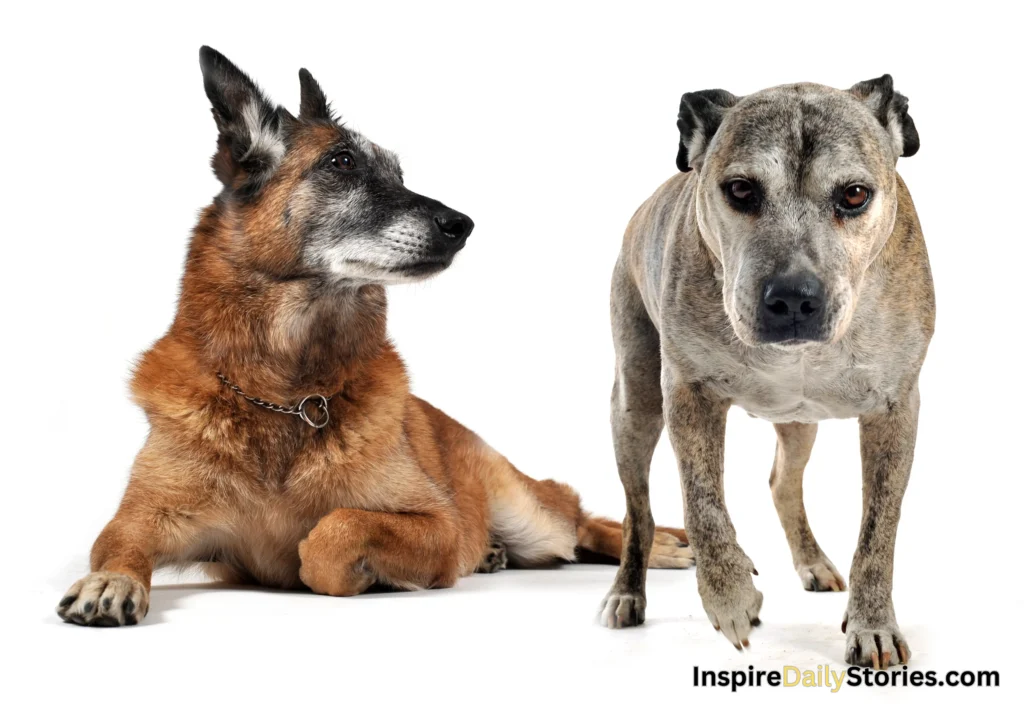Do Pets Understand Nonverbal Cues?

Introduction
A. Hook: The Special Bond Between Humans and Pets
Pets, like cats and dogs, often seem to understand us without us saying a word. Have you ever noticed how your dog wags its tail when you’re happy or how your cat purrs when you pet it? These moments show the unique connection between humans and their furry friends.
B. Importance of Communication in Human-Pet Relationships
Communication is key in any relationship, including the one you have with your pet. While humans mostly communicate through words, animals rely heavily on nonverbal cues like body language, facial expressions, and even scent. Understanding these cues helps us build a stronger bond with our pets and helps them feel safe and loved.
C. Overview of Nonverbal Cues in Communication
Nonverbal cues are messages we send without using words. They can include gestures, posture, eye contact, and tone of voice. For example, when you scratch your dog behind the ears and it wags its tail, that’s a nonverbal cue that your dog enjoys it. Similarly, when your cat arches its back and hisses, it’s telling you to back off. These cues are vital in understanding what our pets are feeling and thinking.

Understanding Nonverbal Communication
A. Definition of Nonverbal Cues
Nonverbal cues are ways we communicate without speaking. They include things like body movements, facial expressions, and even how close or far we stand from someone.
B. Types of Nonverbal Cues
- Gestures: These are movements we make with our hands or arms to express something. For example, waving hello or pointing at something.
- Body Language: This includes how we stand, sit, or move our bodies. For instance, crossing your arms might mean you’re feeling defensive.
- Facial Expressions: Our faces show a lot about how we’re feeling. Smiling usually means we’re happy while frowning might mean we’re upset.
C. Significance of Nonverbal Communication in Human Interactions
Nonverbal communication is super important in how we connect with others. Sometimes, what we don’t say can speak louder than words. For instance, if someone’s slouching and avoiding eye contact, it might show they’re feeling sad or uncomfortable, even if they say they’re fine.

Communication in Human-Pet Relationships
A. Evolution of the Human-Pet Bond
The connection between humans and pets has been growing for thousands of years. Initially, humans kept animals for practical reasons like hunting or protection. But over time, pets became more like family members, providing companionship and love.
B. Role of Nonverbal Cues in Human-Pet Communication
Nonverbal cues play a huge role in how we communicate with our pets. Since animals don’t understand our words like humans do, they rely on our body language, tone of voice, and facial expressions to understand us. For example, when you call your dog’s name in a happy tone and pat your leg, it knows you want it to come over.
C. Examples of Nonverbal Communication Between Humans and Pets
- Body Language: When your cat rubs against your legs or your dog wags its tail when you come home, they’re showing affection through body language.
- Facial Expressions: Have you noticed how your pet’s ears perk up when it’s excited or how its eyes widen when it’s scared? These are all forms of nonverbal communication.
- The tone of Voice: Just like humans, pets can pick up on the tone of our voice. A gentle, soothing voice can reassure them, while a harsh tone might make them nervous.

Research on Pets’ Understanding of Nonverbal Cues
A. Studies Exploring Pets’ Ability to Interpret Human Nonverbal Cues
Scientists have conducted various studies to see if pets can understand the nonverbal cues humans give off. These studies involve observing how animals react to different gestures, facial expressions, and body language.
B. Findings Regarding Pets’ Comprehension of Gestures, Facial Expressions, and Body Language
- Gestures: Research has shown that pets, especially dogs, are pretty good at understanding gestures. They can often follow simple commands like “sit” or “stay” based on hand signals alone.
- Facial Expressions: Dogs and cats can also pick up on human facial expressions. They might approach us when we’re smiling or back away if we look angry or upset.
- Body Language: Pets are sensitive to our body language too. They can sense when we’re tense or relaxed, and they often mirror our emotions.
C. Implications of Research Findings for Human-Pet Interactions
Understanding that pets can interpret our nonverbal cues helps us communicate better with them. It means we can use gestures, facial expressions, and body language to convey our feelings and intentions to our furry friends. This knowledge strengthens the bond between humans and pets and enriches our relationships with them. So, next time you’re with your pet, pay attention to how they respond to your nonverbal cues—it’s a fascinating connection!

Factors Influencing Pets’ Interpretation of Nonverbal Cues
A. Species-Specific Differences in Communication Abilities
Different types of animals have varying abilities to understand and respond to nonverbal cues. For example, dogs are known for their keen ability to read human gestures, while other animals like fish or reptiles may not rely on nonverbal communication as much.
B. Impact of Training and Socialization on Pets’ Understanding of Nonverbal Cues
Pets that undergo training and socialization from a young age tend to be better at understanding human nonverbal cues. This is because they learn to associate certain gestures or expressions with specific actions or rewards. For instance, a dog trained to sit when you raise your hand will respond to that cue consistently.
C. Individual Differences in Pets’ Cognitive Abilities and Temperament
Just like humans, pets have their own unique personalities and cognitive abilities. Some may be naturally more adept at understanding nonverbal cues than others. Factors such as breed, age, and past experiences can also influence how well a pet responds to nonverbal communication.
Practical Applications and Implications
A. Importance of Nonverbal Communication in Pet Training and Behavior Modification
Using nonverbal cues is crucial when training pets and modifying their behavior. For example, when teaching a dog to sit, we often use hand signals along with verbal commands. Consistent use of nonverbal cues helps pets learn faster and reinforces desired behaviors.
B. Strategies for Improving Communication with Pets Through Nonverbal Cues
To improve communication with our pets, we can use clear and consistent nonverbal cues paired with rewards. For instance, when teaching a cat to come when called, we can use a specific hand signal or sound along with offering treats. This helps the pet associate the cue with a positive outcome.
C. Potential Benefits of Enhancing Pets’ Understanding of Human Nonverbal Cues
When pets understand human nonverbal cues better, it strengthens the bond between them and their owners. Additionally, it can improve safety by helping pets avoid potentially dangerous situations. For example, if a dog recognizes a warning gesture from its owner, it might avoid approaching a stranger who seems threatening.
Enhancing pets’ understanding of human nonverbal cues can also make interactions more enjoyable for both parties. When pets respond to our cues, it makes us feel understood and connected, deepening the bond we share with them.
Conclusion
A. Recap of the Significance of Nonverbal Communication in Human-Pet Relationships
Nonverbal communication, like body language and facial expressions, is super important in how we connect with our pets. It helps us understand each other without words and strengthens our bond.
B. Call for Further Research to Deepen Our Understanding of Pets’ Communication Abilities
While we’ve learned a lot about how pets understand nonverbal cues, there’s still much to explore. Further research can help us uncover even more about how animals communicate and how we can improve our interactions with them.
C. Final Thoughts on the Importance of Effective Communication for Strengthening the Bond Between Humans and Pets
Effective communication is key to building a strong relationship with our pets. When we understand each other’s nonverbal cues, we can communicate better and create a deeper connection. So, next time you’re with your furry friend, pay attention to how you’re communicating—it might just make your bond even stronger!
People also ask
Can dogs understand human cues?
Yes, dogs can understand human cues through gestures, tone of voice, and body language.
Do animals communicate non-verbally?
Yes, animals often communicate through nonverbal cues like gestures, facial expressions, and body language.
Do pets understand no?
Pets can learn to associate the word “no” with certain behaviors, but they primarily understand through tone and body language.
Do animals understand when you talk to them?
Animals may not understand the words, but they can pick up on our tone and body language.
Do dogs understand kisses?
Dogs might interpret kisses as a sign of affection from their owners.
Do dogs understand human smiles?
Yes, dogs can understand human smiles as a positive expression.



